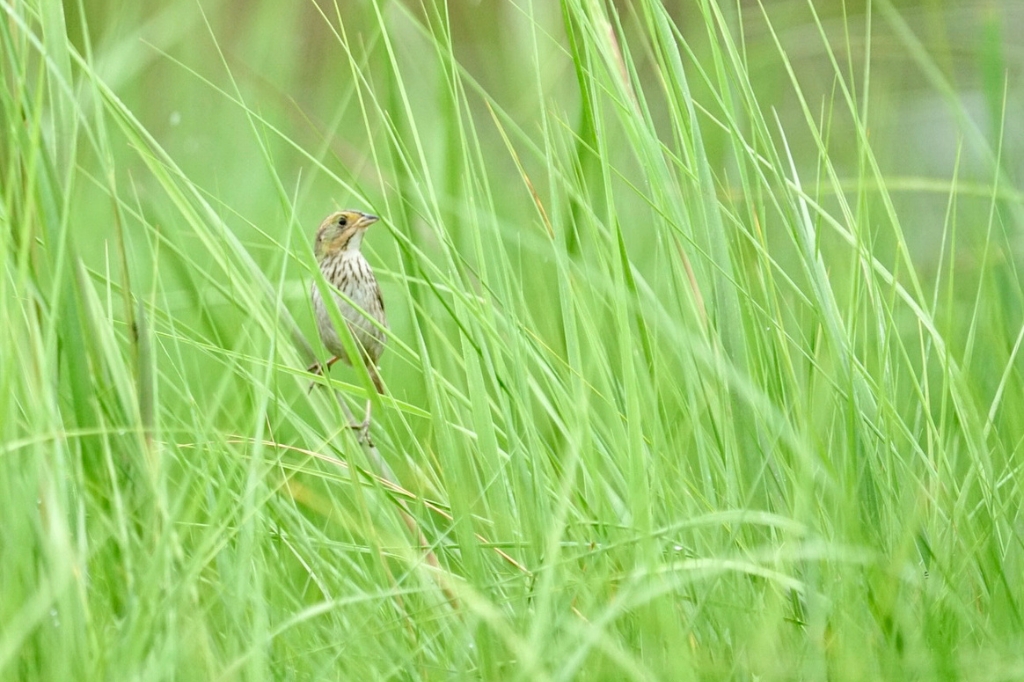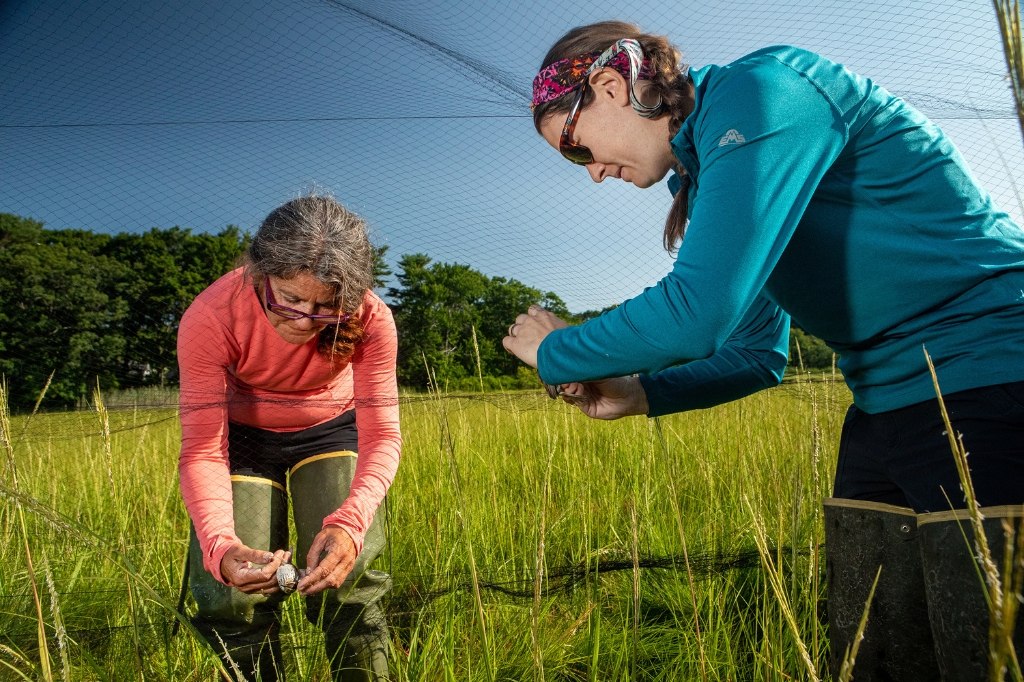By Logan Maxwell and Adrienne Kovach
Related paper: Climate change outpaces adaptive potential via hybridization in nesting female Saltmarsh and Nelson’s Sparrows by Logan M. Maxwell, Jennifer Walsh, Brian J. Olsen, Adrienne I. Kovach, Ornithology.
Conservation practitioners need information that can help predict species’ ability to cope with rapid environmental changes in order to make management decisions. We wanted to better understand the adaptive capacity of two tidal marsh nesting sparrow species, the Saltmarsh (Ammospiza caudacutus) and Nelson’s (Ammospiza nelsoni) sparrows, which are particularly vulnerable to rising sea levels due to climate change. These two tidal marsh birds hybridize where their ranges overlap, and we were particularly interested to know if the sharing of genetic material between the two species may allow for greater adaptive capacity and resilience in the face of environmental change.
Being endemic to salt marshes, these sparrows face threats of habitat loss and shoreline development. They are also uniquely threatened by sea-level rise because they nest mere centimeters above the marsh surface and tidally influenced marsh flooding is their main source of nest failure. Although they have evolved to fit their entire nesting cycle to fledge chicks between monthly lunar high tide events, increased tidal flooding and storm events due to sea level rise are reducing the flood-free window of opportunity for the sparrows to nest successfully.
We tracked reproductive success of these co-occurring sparrow species within the center of the hybrid zone across two breeding seasons. We compared patterns of success between pure and hybrid individuals in relation to the amount of tidal flooding experienced on the marsh and observed tidal marsh nesting adaptations of the female sparrows. Our work showed evidence that there may be an adaptive benefit of geneflow between the species for Nelson’s Sparrow and a potential detriment for Saltmarsh Sparrow in some years. However, we found that nesting success was very low for all sparrows, regardless of genetic makeup, due to high levels of nest flooding, and that sea-level rise is outpacing the rate at which these sparrows may be able to adapt. We think these birds are experiencing water levels (from both tides and large precipitation events) during many breeding seasons that are outside those in which they evolved. As such, any nesting adaptations to avoid flooding or genetic resilience via hybridization no longer matter in those seasons, as the high water levels have a dominant influence on nest success. This suggests that we may be nearing a threshold where the environment has changed so dramatically that Saltmarsh, Nelson’s, and hybrid sparrows can’t adapt quickly enough against the rising tides.
Large variance in reproductive success due to changing environmental conditions provides a challenge not only for the declining sparrow species, but also for scientists trying to detect patterns and drivers of fitness across years and marshes. Inconsistencies across studies, and between years within our own study, highlight the fact that it can be difficult to detect patterns of adaptation when levels of nest failure are so high. Behaviors that have an adaptive benefit in the environment may only be evident in some years and in some locations now due to climate change impacts. Low levels of reproductive success can obscure patterns and make conclusions less clear. Researchers may also need to adapt — and be conscious of the way we think about and approach these sorts of questions in the face of rapid environmental variation.



